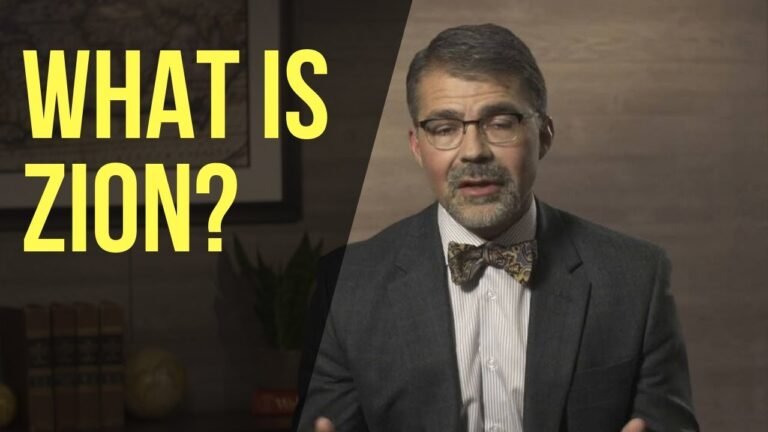Biblical Insights on Gaza: A Journey Through History and Faith
In the heart of ongoing conflicts, the biblical land of Gaza emerges as a poignant symbol of resilience and hope. Rich with historical significance, Gaza’s stories echo through ancient texts, reminding us of the enduring human spirit amidst adversity. As modern struggles unfold, the lessons from the Bible resonate deeply, inviting reflection on peace, faith, and the quest for understanding in a world often divided. This exploration delves into the intersection of scripture and contemporary challenges, shedding light on Gaza’s enduring legacy.
What is the significance of Gaza in the Bible?
Gaza holds a significant place in biblical history, often recognized as a key city in ancient narratives. It is notably mentioned in the story of Samson, where he was imprisoned, ultimately leading to his death. This account highlights Gaza’s role as a backdrop for dramatic events and illustrates its prominence in the cultural memory of the Israelites.
In addition to its connection to Samson, the prophets Amos and Zephaniah foretold a bleak future for Gaza, prophesying that it would one day be deserted. These prophetic declarations reflect the broader themes of judgment and restoration that permeate the biblical text, indicating the city’s fluctuating fortunes through the ages. Such predictions contributed to Gaza’s reputation as a symbol of decline and desolation.
Historically, Gaza was incorporated into the territory of Israel during the reign of King David in the early 11th century BCE. Its strategic location made it an important city for trade and military endeavors. The city’s complex history, intertwined with biblical narratives and prophetic visions, underscores its enduring significance in the annals of ancient Israelite culture.
What does the Bible say about Gaza?
In biblical times, Gaza was a prominent city among the five principal cities of the Philistines, a group often associated with the Sea Peoples who are believed to have originated from the Greek island of Crete. This ancient city served as a vital hub for trade and conflict, reflecting its strategic importance in the region. The Philistines are frequently mentioned in the Hebrew Bible, which chronicles their interactions with the Israelites, including notable confrontations that shaped the historical narrative of the area.
The significance of Gaza waned after King David’s military campaigns, which led to the Philistines’ decline. David’s victories not only diminished the power of the Philistines but also marked a shift in dominance towards the Israelites. This period of conflict and consolidation is pivotal in understanding the dynamics of ancient Near Eastern history, as it set the stage for the subsequent rise of the Israelite kingdom.
Ultimately, Gaza’s fate was sealed with the conquests of Nebuchadnezzar of Babylon, who effectively eradicated the Philistine presence in the region. This eviction signified the end of Gaza’s prominence as a Philistine stronghold, leading to its transition into a different historical narrative. The city, once a vital player in biblical accounts, became a symbol of the shifting tides of power and the intricate tapestry of ancient civilizations in the Holy Land.
In which part of the Bible is it mentioned that Gaza will be destroyed?
The prophecy of destruction for Gaza and its neighboring cities is vividly captured in the Book of Zephaniah. In Zephaniah 2:4-7, the scripture warns of a grim fate for Gaza, declaring that no one will remain in the city, and Ashkelon will face total devastation. The imagery of empty lands and frightened inhabitants paints a stark picture of impending judgment, emphasizing the severity of the situation.
This passage serves as a poignant reminder of the consequences that befall those who oppose divine will. The depiction of Ashdod becoming desolate by noon and the flight of Ekron’s people underscores the urgency of the prophecy. Ultimately, Zephaniah’s message resonates through the ages, illustrating the fragility of human settlements in the face of divine decree.
Unveiling the Sacred Stories of Gaza’s Past
Gaza, a land steeped in history, is a tapestry woven with the threads of ancient narratives and vibrant cultural heritage. From its early beginnings as a trade hub to its role in pivotal historical events, Gaza has witnessed the rise and fall of empires. Each stone and artifact tells a story, echoing the voices of those who once walked its streets. As we delve into these sacred stories, we uncover the resilience and spirit of a people who have thrived amidst adversity.
In the heart of Gaza lie remnants of civilizations that have shaped the region’s identity. Archaeological sites reveal a rich mosaic of influences, from the Philistines to the Romans, each leaving an indelible mark on the landscape. The intricate mosaics, ancient churches, and bustling markets speak not just of a place, but of a legacy that transcends time. This historical depth invites us to explore the connections between past and present, highlighting Gaza’s significance in the broader narrative of human civilization.
Today, as Gaza faces modern challenges, the stories of its past serve as a beacon of hope and unity. They remind us of the enduring strength of its people and their unwavering commitment to preserving their heritage. By engaging with these sacred tales, we not only honor the memories of those who came before but also foster a deeper understanding of the complexities that define Gaza today. Through this exploration, we find inspiration in resilience, a reminder that even in the face of hardship, the spirit of history can illuminate the path forward.
Faith and Resilience: Lessons from the Holy Land
In the heart of the Holy Land, where ancient stones whisper stories of hope and perseverance, faith and resilience emerge as powerful forces that shape the human spirit. Here, amidst the sacred landscapes, individuals draw strength from their beliefs, demonstrating an unwavering commitment to overcome adversity. The lessons learned in this region—of community, trust, and the enduring quest for peace—serve as a beacon for people worldwide. As we reflect on these timeless narratives, we find inspiration to cultivate our own resilience, reminding us that even in the face of challenges, faith can illuminate the path toward healing and unity.
Exploring Spiritual Legacy Amidst Conflict
In a world often fraught with discord, the pursuit of spiritual legacy offers a beacon of hope and understanding. Amidst the clamor of conflict, individuals and communities are increasingly turning to their spiritual roots, seeking solace and wisdom that transcends temporal struggles. This journey inward not only fosters personal growth but also strengthens communal bonds, allowing diverse groups to unite in shared beliefs and values, even in the face of adversity.
As historical narratives unfold, we witness how spiritual traditions have often provided a framework for resilience and reconciliation. From ancient civilizations to modern societies, the teachings of compassion, forgiveness, and unity have served as guiding principles during turbulent times. By embracing these lessons, people can navigate the complexities of their circumstances while nurturing a sense of purpose that connects them to a broader human experience.
Ultimately, exploring spiritual legacy amidst conflict reveals the enduring power of faith to inspire change and foster understanding. It encourages individuals to reflect on their own beliefs and the impact they can have on the world around them. In doing so, we can create a tapestry of hope, weaving together the threads of our diverse spiritual heritages to illuminate pathways toward peace and coexistence.
The complex interplay between the teachings of the Bible and the ongoing struggles in Gaza underscores the profound impact of faith in shaping narratives of conflict and hope. As communities seek understanding and reconciliation, the lessons drawn from scripture offer a powerful lens through which to view the challenges faced in this region. Ultimately, the enduring messages of compassion and justice found within the Bible resonate deeply, urging a collective pursuit of peace amidst adversity.







